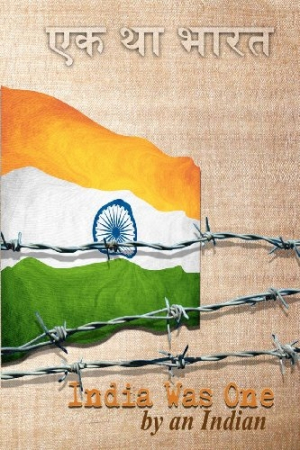India Was One
Though he chooses to remain anonymous, credited as simply “An Indian,” the author of India Was One has obviously drawn much from his personal experience to flavor his novel. By the time they reach its conclusion, many readers will come to feel they know this author well. While not as tense and dramatic as the back cover or the promise of the first chapter, the book is an engaging, entertaining, and educational read—one that gives Western readers a welcome insight into the educated class of Indian and Indian-American society.
The opening chapter introduces the reader to a pair of lovers separated by the political division of their homeland. This dramatic situation is then set aside for over 250 pages. The author spends the next twelve chapters telling the backstory of the lovers, from their romantic comedy “meet-cute” in university through their courtship, wedding, honeymoon, move to Los Angeles, and hurried return home to a nation suddenly and unexpectedly partitioned.
It is not just the lovers, Jai and Kaahi, who are shocked by this division—it is also the readers, who are given no presage of the fragmentation of the subcontinent’s great state. To the contrary, readers are shown and taught all that is good about India for most of the book. This is all passed on through scores of italicized paragraphs that are, in effect, footnotes inserted into the narrative. Many of these follow words or sayings that were introduced by a phrase rendered in Hindi script, for which a phonetic pronunciation and an English definition are provided in parentheses.
While these asides are interesting and educational, their positioning inside the narrative breaks up the story. Some are so lengthy as to be mini-chapters in themselves. The notations on everything from tiffins and samosas to the saffron garments of priests and the dangers of doing drugs are at times fascinating and attention-grabbing—but that is also the problem, as they draw the reader’s attention away from the story.
The dozen chapters “An Indian” spends on getting his readers to come to know Jai and Kaahi and their friends and families in both India and America make for a pleasant read, but provide an unnecessarily long prelude to the tragedy of lovers divided. The author leaves himself a scant one-hundred pages to tell that story, which he manages to resolve in a whirlwind manner that is sudden and unexpected, like the division of India itself.
This is an enjoyable book, but the potential is there for it to be much stronger. The characters are human and authentic. The love story is agreeable and believable, if rather humdrum. The insights into the people, culture, and customs of India’s modern, educated, upper-middle class are actually more attention-grabbing than the characters and the story, and perhaps that is the root of the problem. Rather than fully incorporating these elements into the story dramatically, the author chooses to present them as bits of trivia, like sidebars in a guidebook.
These criticisms aside, India Was One is a moderately entertaining novel. There is enough of interest here to spark the curious to seek out other books—histories as well as novels—about the wonders and mysteries of the subcontinent and its sons and daughters, both those who live in India and those who, like “An Indian,” have emigrated to other lands.
Reviewed by
Mark G. McLaughlin
Disclosure: This article is not an endorsement, but a review. The publisher of this book provided free copies of the book and paid a small fee to have their book reviewed by a professional reviewer. Foreword Reviews and Clarion Reviews make no guarantee that the publisher will receive a positive review. Foreword Magazine, Inc. is disclosing this in accordance with the Federal Trade Commission’s 16 CFR, Part 255.

